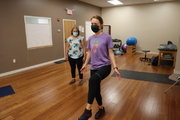Don't Let Shin Splints Stop Your Stride!

Signs of spring in Vermont are making their appearance, from the crocuses poking their heads out of the ground to the near-impassable muddy ruts forming on our dirt roads to the increasing numbers of Vermonters getting outside to walk, run, bike, and play. With the return to outdoor activity comes the return of activity-related aches & pains, especially with running. Some of these are temporary as our bodies adjust to the newly reintroduced movements, while others can be lingering problems that eventually prevent us from participating altogether. As movement specialists across the lifespan, those are exactly the type of aches & pains that we aim to treat and prevent.
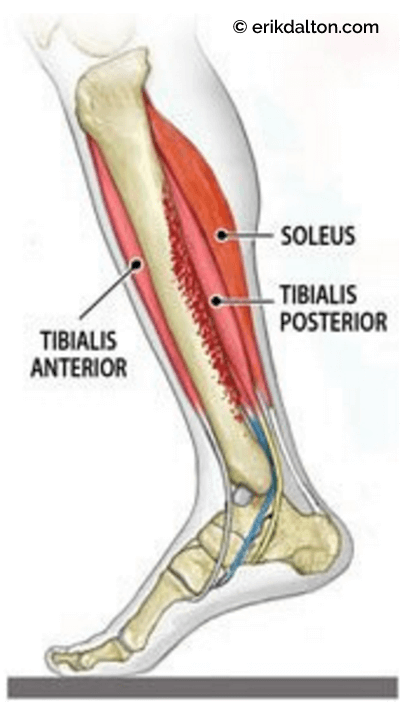
Shin splints, also known as medial tibial stress syndrome, is a catch-all term for shin pain due to irritation or minor tearing at the attachment site of your lower leg muscles, such as your posterior tibialis & flexor digitorum that are deep along the inside of the shin, your anterior tibialis along the outer front of the shin, and your soleus deep in the calf. These muscles function together to support the structure of your foot and propel you forward with running and jumping movements, so activities that incorporate these motions repeatedly are more likely to result in shin pain.
Another risk factor for shin splints is foot posture. People who have feet that overpronate, or flatten, when walking or running are more likely to develop shin splints because these muscles must work harder to put your foot in a good position to propel forward. Gait mechanic analysis shows that while feet should flatten slightly to absorb impact when you put weight on the foot, they must supinate, or develop an arch, to become rigid enough for you to push-off and move forward. If your foot is already pronated and flattens further when you step on it, the muscles in your lower leg must generate more force at a rapid pace, leading to stress at the muscle-bone interface and eventual shin pain.
Before you get discouraged from running or being active, know that there are plenty of things you can do on your own to treat or prevent shin pain.
Stretching
I'm a huge advocate for stretching daily in general, especially so when you are active. Tight muscles are more likely to get injured because they pull more on their attachment sites when they cannot extend as easily. Active stretching is best prior to activity to increase blood flow to tissues, whereas you can do passive stretching afterwards. Below are two stretches for the calf muscles - keeping the knee straight will target your gastrocnemius, the larger & more visible muscle in your calf, while performing it with the knee bent will target your soleus, the deeper muscle that attaches on the tibia. Hold for 10-15 sec and perform 3x each side.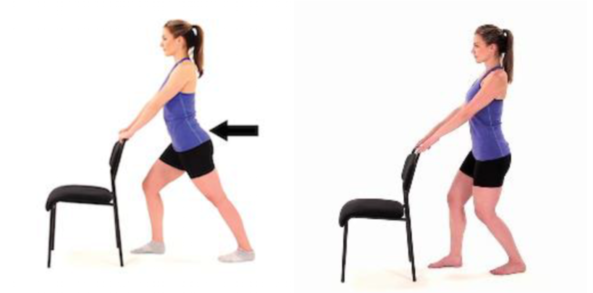
Strengthening
Believe it or not, you can strengthen the muscles in your feet to support the structure of your foot! Enter in the fantastic four exercises that I call "Toe Yoga" because they target the smaller, stabilizing muscles in the foot just like yoga practice targets the stabilizing muscles in your trunk.
- Seated Toe Extensions - While keeping the heel & the ball of your foot on the ground, lift only your big toe. Then keep the big toe on the ground and lift all four little toes. Your foot should stay steady as you do this! Perform for 30-60 seconds.
 Toe Spreading - While keeping the heel & ball of your foot on the ground, spread out all of your toes. Perform for 30-60 seconds.
Toe Spreading - While keeping the heel & ball of your foot on the ground, spread out all of your toes. Perform for 30-60 seconds.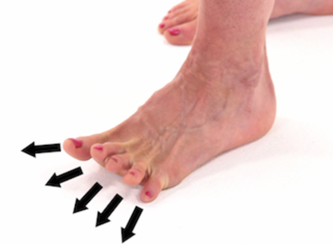
- Arch Doming - While keeping the heel & ball of your foot on the ground, lift your arch slightly. It is often easier to do this if you think about dragging or scooching your big toe knuckle towards your heel. If your foot curls or you see a large tendon pop out at the front of your ankle, you are compensating, so try again! Perform for 30-60 seconds.
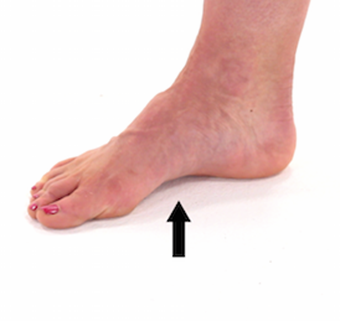
Supportive Shoes
It really does make a difference to have supportive shoes because they can limit foot overpronation when weight-bearing. This can be done by adding inserts, such as Superfeet, or purchasing shoes that are designed to limit pronation. Some shoe stores, such as Skirack and Fleet Feet, will do a gait assessment to help find a shoe to support your foot. Don't be afraid to retire your old shoes, especially if you are planning to wear them a lot!
Icing
If you are currently experiencing shin pain, it is a good idea ice the shin to reduce inflammation along the muscle attachment sites. Use either an ice cube or frozen cup of water (best to use a paper cup) and run it up and down over the painful area for 5-10 minutes.
Interested in more running-related advice? Check out Steady Strides!

